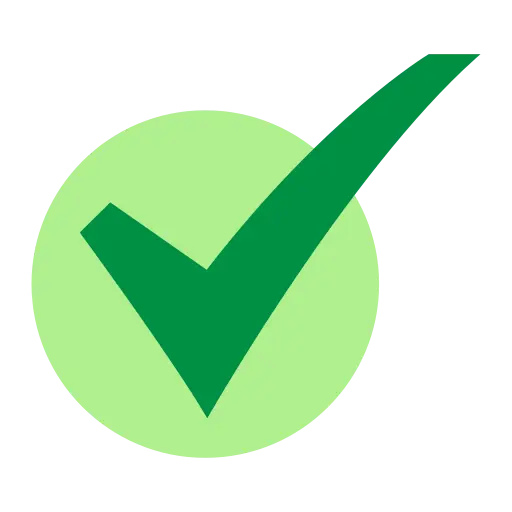How to Write a Resume Letter of Introduction That Gets You Hired in 2025
Trust Score: 4.8
351 reviews

Table of Contents
Introduction
In 2025’s highly competitive job landscape, sending only a resume often isn’t enough to capture an employer’s attention. Recruiters and hiring managers receive hundreds of applications daily—so the challenge lies in making yours truly stand out.
That’s where a resume letter of introduction comes in. This short yet impactful document serves as your personal handshake—a tailored message that explains who you are, why you’re reaching out, and what makes you an ideal fit. Whether you’re applying through a professional contact, a referral, or even introducing yourself to a company with no active openings, a letter of introduction bridges the gap between your resume and a meaningful first impression.
A well-written self-introduction letter for a job can spark curiosity, build rapport, and increase your chances of landing an interview before your resume is even opened. In this guide, we’ll show you how to write one that captures attention and gets you hired in 2025.
What Is a Resume Letter of Introduction?
When applying for a job—or even just expressing interest in a company—it’s not always ideal to rely on your resume alone. That’s where a resume letter of introduction comes in.
A letter of introduction for a resume is a short, personalized message that introduces you to a potential employer, recruiter, or networking contact. Unlike a traditional cover letter, it’s not necessarily tied to a specific job opening. Instead, it’s often used when you’re:
 Referred by someone within the company
Referred by someone within the company Reaching out through networking or LinkedIn
Reaching out through networking or LinkedIn Applying speculatively (without a listed vacancy)
Applying speculatively (without a listed vacancy)
This self-introduction letter for a job highlights who you are, what you offer, and why you're writing—all in a concise and engaging way. It serves as a prelude to your resume, giving context and personality to your application, and often leads to more responses than cold resumes alone.
Whether you’re a seasoned professional or an entry-level candidate, learning how to write a resume introduction statement can boost your visibility and help build meaningful professional connections.
Key Elements of a Resume Letter of Introduction
What to Include in a Resume Letter of Introduction
Writing a strong resume letter of introduction starts with knowing what to include—and what to leave out. Unlike a full cover letter, this document is shorter, more conversational, and tailored for introductions rather than formal applications.
Here are the essential elements of an impactful self-introduction letter for a job:
🟢 1. Professional Greeting
Begin with a personalized salutation like:
 Dear [Hiring Manager’s Name] or
Dear [Hiring Manager’s Name] or Hello [Company Name] Team
Hello [Company Name] Team
Avoid generic greetings like "To Whom It May Concern" unless necessary.
🟢 2. Clear Opening Sentence
State the purpose of your letter right away:
“I’m writing to introduce myself and express my interest in potential opportunities at [Company Name].”
If referred, mention the referral upfront.
🟢 3. Brief Background Summary
Summarize who you are in 2–3 sentences:
 Your current role or recent experience
Your current role or recent experience Core strengths or industry focus
Core strengths or industry focus Any major achievement or specialization
Any major achievement or specialization
“As a digital marketing professional with 4+ years of experience in SEO and content strategy, I’ve helped brands boost traffic by over 120%.”
🟢 4. Connection to the Company
Show that you’ve done your homework:
 Mention the company’s mission, recent project, or values
Mention the company’s mission, recent project, or values Explain how your skills align with their needs
Explain how your skills align with their needs
“I admire [Company]'s commitment to innovation in healthcare tech, and I’d love to contribute with my background in UX design.”
🟢 5. Clear Call to Action
Invite the recipient to connect or consider your resume:
“I’ve attached my resume for your review and would welcome the opportunity to speak further.”
End with a polite closing such as:
Sincerely, Best regards, or Thank you for your time.
Resume Letter of Introduction vs. Cover Letter
How Is a Letter of Introduction Different from a Cover Letter?
While both documents accompany a resume, a resume letter of introduction and a cover letter serve different purposes and are used in different contexts.
Understanding the difference helps you choose the right tool for your job search strategy.
🟨 Main Differences
When Should You Use Each?
 ✅ Use a cover letter when applying to a job posting that outlines specific qualifications, responsibilities, and requirements.
✅ Use a cover letter when applying to a job posting that outlines specific qualifications, responsibilities, and requirements. ✅ Use a letter of introduction when:
✅ Use a letter of introduction when:  Referred by a current employee
Referred by a current employee Networking through LinkedIn
Networking through LinkedIn Applying to companies that interest you—even if they haven’t posted a job
Applying to companies that interest you—even if they haven’t posted a job
Quick Tip: Combine Smartly
Frequently Asked Questions About Resume Letters of Introduction
What’s the difference between a letter of introduction and a cover letter?
A cover letter is written specifically for a job that has been advertised, addressing the job requirements in detail. A resume letter of introduction, on the other hand, is more general and often used for networking, referrals, or speculative job applications where there’s no formal opening.
Should I send a letter of introduction even if there’s no job posting?
Yes! A well-crafted letter of introduction for a resume shows initiative and can help you get noticed before a job is publicly listed. It’s especially useful for internal referrals or when targeting companies that align with your goals.
Should I attach my resume with the introduction letter?
Absolutely. Even if you're sending your letter in the body of an email, always attach a professional, ATS-friendly resume in PDF format. This ensures the recruiter has all the information they need to evaluate you.
How long should a resume letter of introduction be?
Keep it short and impactful—ideally 250–300 words. Focus on introducing yourself, highlighting your value briefly, and inviting further conversation.
Can I use the same introduction letter for every job or company?
No. Just like a cover letter, your resume letter of introduction should be customized. Personalization (mentioning the company name, mutual contacts, or relevant values) dramatically increases your chances of getting a response.
Is a resume letter of introduction better than cold applying with just a resume?
Yes. Sending a self-introduction letter for job applications creates context and builds rapport. Recruiters are more likely to engage with candidates who take the time to introduce themselves professionally.







